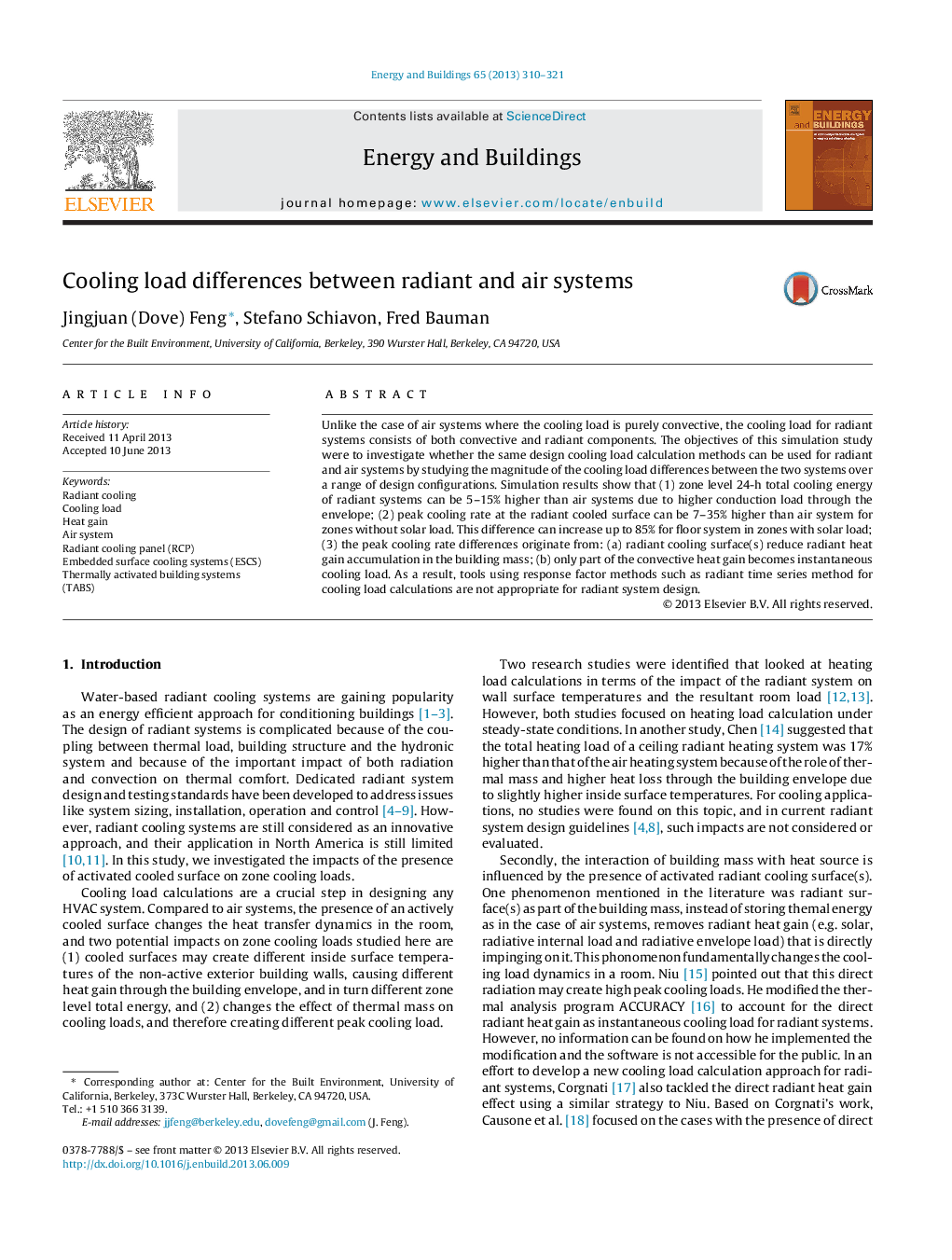| کد مقاله | کد نشریه | سال انتشار | مقاله انگلیسی | نسخه تمام متن |
|---|---|---|---|---|
| 263215 | 504068 | 2013 | 12 صفحه PDF | دانلود رایگان |

• We investigated the differences in cooling load between radiant and air systems.
• Zone peak cooling rate for radiant system can be 92% higher than air systems.
• Modified ASHRAE cooling load generation diagram for radiant system.
• TF and RTSM based tools are not appropriate for radiant system design.
• Proposed improvements in design standards to facilitate better design calculation.
Unlike the case of air systems where the cooling load is purely convective, the cooling load for radiant systems consists of both convective and radiant components. The objectives of this simulation study were to investigate whether the same design cooling load calculation methods can be used for radiant and air systems by studying the magnitude of the cooling load differences between the two systems over a range of design configurations. Simulation results show that (1) zone level 24-h total cooling energy of radiant systems can be 5–15% higher than air systems due to higher conduction load through the envelope; (2) peak cooling rate at the radiant cooled surface can be 7–35% higher than air system for zones without solar load. This difference can increase up to 85% for floor system in zones with solar load; (3) the peak cooling rate differences originate from: (a) radiant cooling surface(s) reduce radiant heat gain accumulation in the building mass; (b) only part of the convective heat gain becomes instantaneous cooling load. As a result, tools using response factor methods such as radiant time series method for cooling load calculations are not appropriate for radiant system design.
Figure optionsDownload as PowerPoint slide
Journal: Energy and Buildings - Volume 65, October 2013, Pages 310–321